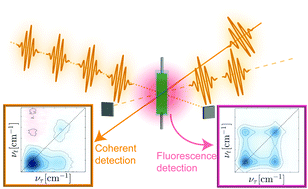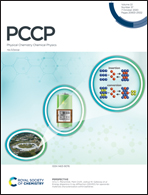Coherently and fluorescence-detected two-dimensional electronic spectroscopy: direct comparison on squaraine dimers†
Abstract
Optical two-dimensional electronic spectroscopy (2DES) is now widely utilized to study excitonic structure and dynamics of a broad range of systems, from molecules to solid state. Besides the traditional experimental implementation using phase matching and coherent signal field detection, action-based approaches that detect incoherent signals such as fluorescence have been gaining popularity in recent years. While incoherent detection extends the range of applicability of 2DES, the observed spectra are not equivalent to the coherently detected ones. This raises questions about their interpretation and the sensitivity of the technique. Here we directly compare, both experimentally and theoretically, four-wave mixing coherently and fluorescence-detected 2DES of a series of squaraine dimers of increasing electronic coupling. All experiments are qualitatively well reproduced by a Frenkel exciton model with secular Redfield theory description of excitation dynamics. We contrast the spectral features and the sensitivities of both techniques with respect to exciton energies, delocalization, coherent and dissipative dynamics, and exciton–exciton annihilation. Discussing the fundamental and practical differences, we demonstrate the degree of complementarity of the techniques.



 Please wait while we load your content...
Please wait while we load your content...